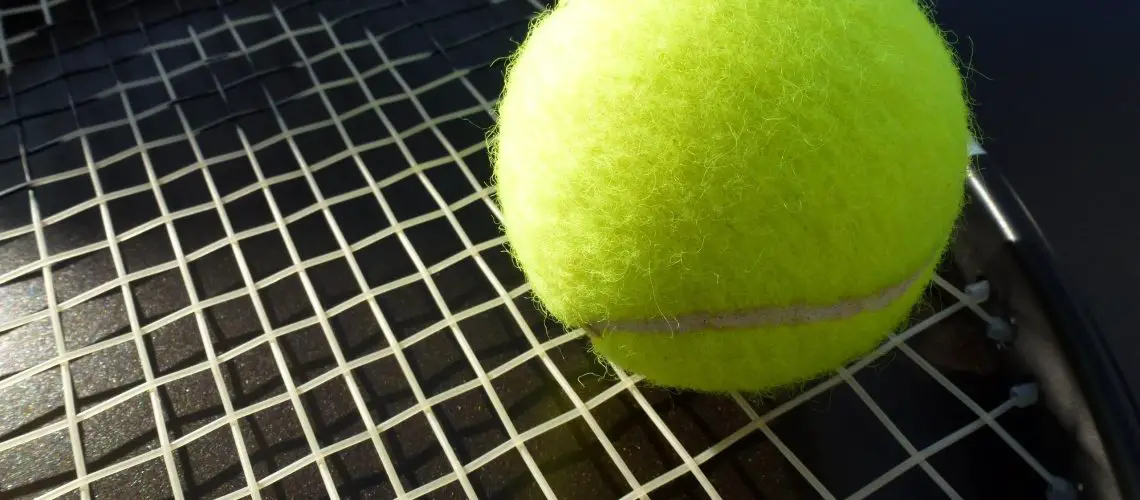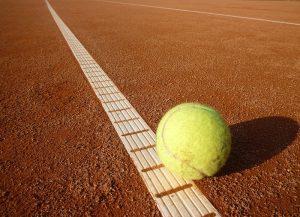We may earn money or products from the companies mentioned in this post.
Introduction

Tennis ball speed is a crucial element in the game of tennis The ability to generate high ball speeds can give a player a significant advantage, allowing them to hit powerful shots that are difficult for their opponents to return Understanding the factors that affect tennis ball speed is essential for players and coaches looking to improve their game
The Importance of Tennis Ball Speed
In tennis, ball speed plays a vital role in determining the outcome of a match A faster shot gives the opponent less time to react and prepare for their next shot, increasing the chances of forcing an error or winning points outright It also allows players to hit winners more frequently, putting pressure on their opponents and dictating the flow of the game
Moreover, fast shots can disrupt an opponent’s rhythm and timing, making it harder for them to execute their own shots effectively The ability to consistently generate high ball speeds can create psychological advantages by intimidating opponents and keeping them on the defensive
Factors Affecting Tennis Ball Speed
Several factors influence tennis ball speed:
-
Racquet head speed:
The velocity at which a player swings their racquet greatly impacts the speed of the shot A faster racquet head speed transfers more energy to the ball, resulting in increased velocity -
String tension:
String tension affects how much power is generated upon impact with the ball Higher string tensions can provide greater control but may sacrifice some power, while lower tensions allow for more power but reduce accuracy -
Sweet spot contact:
Hitting the sweet spot on the racquet’s string bed maximizes power transfer from racquet to ball Shots struck off-center result in reduced ball speed and less control -
Ball type and condition:
The type of tennis ball used, such as pressurized or non-pressurized, can affect its overall liveliness and bounce Additionally, the condition of the ball, including wear and tear, can impact its speed off the racquet -
Court surface:
Different court surfaces have varying levels of friction, which affects how much the ball skids or bounces off the surface Certain surfaces may enhance or diminish ball speed based on their characteristics
Understanding these factors allows players to make adjustments to their technique, equipment, and strategy in order to optimize their tennis ball speed By honing their skills in generating faster shots, players can gain a competitive edge on the court
Factors Determining the Speed of a Tennis Ball
When it comes to the speed of a tennis ball, several factors come into play Let’s explore these factors and how they contribute to the velocity of the ball on the court
Type and quality of the tennis ball
The type and quality of the tennis ball can greatly influence its speed Pressurized balls have a higher speed compared to non-pressurized ones The internal pressure in pressurized balls allows for more bounce and faster movement through the air Additionally, the material and construction of the ball play a role in determining its speed Different materials may have varying levels of elasticity, affecting how forcefully they rebound off the racket
Player’s skills and technique
The player’s skills and technique are crucial factors in determining how fast they can hit a tennis ball The stroke type and power generation techniques employed by players significantly impact their shot speed Whether it’s a forehand, backhand, serve, volley, or any other stroke, each has its own unique characteristics that can affect velocity Factors such as topspin, slice shots, or hitting with a flat trajectory can also impact how fast the ball travels through the air
Furthermore, racquet choice and string tension contribute to shot speed as well The selection of an appropriate racquet with specific head size, weight distribution, and string pattern can enhance power generation while maintaining control over shots
Court surface and conditions
The court surface plays a significant role in determining how fast a tennis ball travels during gameplay Hard courts tend to produce faster shots due to less friction between the surface and the ball compared to clay or grass courts
Weather conditions also have an impact on shot speed Humidity affects air density which can either increase or decrease resistance against moving objects like tennis balls Temperature variations can also affect both air density and court surface conditions, influencing shot speeds accordingly
Understanding these factors is essential to grasp the nuances of tennis ball speed and how various elements interact to create an exciting and dynamic game on the court
Conclusion

After exploring the various factors that affect tennis ball speed, it is clear that there are several key elements to consider in order to maximize your performance on the court
Recap of factors affecting tennis ball speed
Throughout this article, we discussed how factors such as racket head speed, string tension, ball type, and court surface can all impact the speed of a tennis ball These variables interact with each other in complex ways, making it crucial for players to understand their individual effects
Emphasizing the importance of practice and technique improvement
While equipment choices certainly play a role in determining ball speed, it is important to note that practice and technique improvement are equally essential Developing a strong swing technique, efficient footwork, and proper body mechanics can significantly enhance your ability to generate power and control over the ball
Remember that Rome wasn’t built in a day – consistent practice and dedication are key when striving for improvement Working on strength training exercises specific to tennis can also help boost your overall power and explosiveness on the court
Encouragement to experiment with various equipment options for optimal performance
In addition to honing your skills through practice, don’t be afraid to experiment with different equipment options to find what works best for you Trying out rackets with varying characteristics such as weight distribution or stiffness levels can provide valuable insights into how these factors influence your game
Similarly, testing different string tensions or experimenting with different brands and models of tennis balls may reveal surprising differences in terms of speed and control Keep an open mind when exploring these options and be willing to adapt as you discover what suits your playing style best
In conclusion, achieving maximum tennis ball speed requires a holistic approach that takes into account both the technical aspects of your game and the equipment you choose to use By understanding and optimizing factors such as racket head speed, string tension, ball type, and court surface, combined with dedicated practice and technique improvement, you can unlock your full potential on the court So go out there, experiment, practice diligently, and enjoy the exhilarating journey of improving your tennis game!
Useful Links

Why It’s Almost Impossible to Hit a 160 MPH Tennis Serve
Which Tennis Balls Are Fastest? – The Racket Life
Tennis Ball
Maximum Speed of a Ping Pong Ball – Table Tennis
World record tennis serve is 144 miles an hour and …
Do Tennis Balls Move Faster Than Shuttlecocks?
How fast does a tennis ball have to spin to make …
Fastest recorded tennis serves
Speed of a Table Tennis Ball & Comparison with other sports
The Fastest Tennis Ball Machines
BALL SPEED AND REACTION TIME …
How fast should my ball machine shoot?
This Is How Fast a Tennis Serve Looks Like
How fast would you have to throw a tennis ball to make it …
What is the fastest tennis serve ever recorded? – AS USA
Science explains why female tennis players can serve as …
How the Humble Tennis Ball Has Helped Change the Game
Increasing Ball Speed in Tennis
The Fastest Tennis Serves Ever






